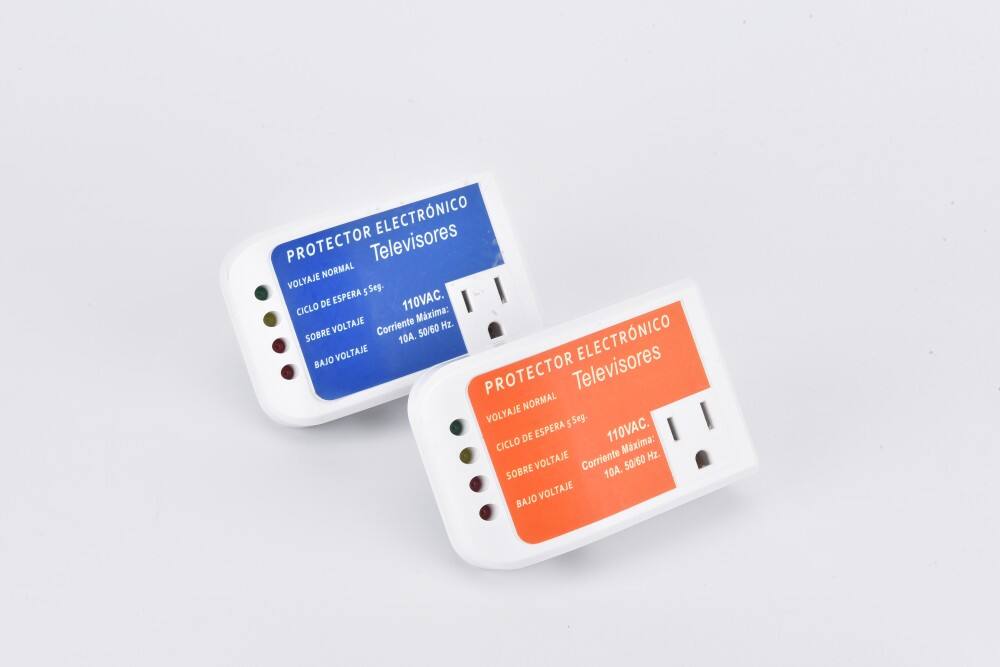Power surges pose a significant threat to industrial equipment and operations, making the selection of an appropriate volt surge protector crucial for maintaining system integrity and preventing costly downtime. Industrial power panels require robust protection against both external and internal surge events, which can originate from lightning strikes, utility switching operations, or internal load changes.
Modern industrial facilities house sophisticated electronic equipment and control systems that are particularly vulnerable to power fluctuations. A properly selected volt surge protector serves as the first line of defense, safeguarding valuable assets and ensuring continuous operation of critical processes. The investment in appropriate surge protection typically pays for itself many times over by preventing equipment damage and production losses.
The voltage rating of a volt surge protector must match the electrical system's nominal operating voltage. Industrial applications commonly operate at 480V or 600V three-phase systems, requiring surge protectors specifically designed for these voltage levels. Protection modes should cover all possible surge paths, including line-to-line, line-to-neutral, and line-to-ground configurations.
Advanced volt surge protectors offer multiple protection modes simultaneously, ensuring comprehensive coverage against various types of surge events. The voltage protection rating (VPR) indicates the maximum voltage that will reach protected equipment during a surge event, with lower VPR values indicating better protection.
Industrial environments demand surge protectors with high surge current capacity, typically ranging from 50kA to 400kA per phase. This rating determines the device's ability to handle multiple surge events over its lifetime. When selecting a volt surge protector, consider both the maximum surge current rating and the device's ability to withstand repeated surge events.
The surge current capacity should be sized according to the facility's exposure level, taking into account factors such as geographical location, lightning activity, and the presence of nearby heavy industrial equipment. A higher capacity provides better protection and longer service life in environments prone to frequent surge events.
The response time of a volt surge protector is critical in industrial settings where microseconds can make the difference between protected equipment and catastrophic failure. Modern surge protection devices offer response times in the nanosecond range, ensuring rapid reaction to voltage anomalies. Look for devices with published response time specifications and third-party testing certifications.
Performance indicators such as status monitoring capabilities and end-of-life prediction features provide valuable information about the surge protector's operational status. These features allow maintenance personnel to proactively replace units before they fail, preventing unexpected equipment exposure to surge events.

Industrial environments often present challenging conditions that affect surge protector performance and longevity. Temperature ratings, humidity tolerance, and enclosure ratings (NEMA/IP) must align with the installation location's environmental conditions. Surge protectors installed in outdoor panels or harsh industrial environments require appropriate environmental protection ratings.
Consider the potential impact of vibration, electromagnetic interference, and chemical exposure when selecting a volt surge protector. Some industrial applications may require specialized designs with enhanced environmental protection or additional filtering capabilities to ensure reliable operation.
Proper installation is essential for optimal surge protection performance. The mounting location should minimize lead lengths between the surge protector and the protected equipment. Most industrial volt surge protectors offer DIN rail or panel mounting options, facilitating integration into existing power panels.
Connection methods must comply with relevant electrical codes and manufacturer specifications. Use appropriate wire sizes and types, and ensure proper torque on all connections. Many modern surge protectors feature tool-free installation options and modular designs for easier maintenance and replacement.
Implementing regular monitoring and maintenance procedures extends the life of surge protection systems and ensures continued equipment protection. Modern volt surge protectors often include remote monitoring capabilities, allowing integration with building management systems or industrial control networks.
Establish a maintenance schedule that includes regular visual inspections, testing of monitoring functions, and documentation of surge events. Some advanced surge protectors provide diagnostic data and predictive maintenance information, helping optimize replacement schedules and minimize maintenance costs.
Industrial surge protectors must comply with relevant safety standards and certifications for their intended application. Key standards include UL 1449 4th Edition, IEC 61643, and industry-specific requirements. Ensure selected devices carry appropriate certification marks and meet local electrical code requirements.
Documentation of compliance testing and certification should be readily available from the manufacturer. This information is crucial for regulatory compliance and insurance purposes, particularly in critical industrial applications where equipment protection is essential.
Manufacturers should provide comprehensive testing documentation demonstrating their products' performance under various surge conditions. This documentation typically includes test results for surge current capacity, voltage protection ratings, and response time measurements.
Keep detailed records of installed surge protectors, including model numbers, installation dates, and maintenance history. This documentation supports warranty claims and helps track device performance over time.
The lifespan of an industrial volt surge protector varies depending on exposure to surge events and environmental conditions. Under normal circumstances, quality surge protectors can last 5-10 years, but frequent surge exposure may reduce this lifetime. Regular monitoring of status indicators helps determine when replacement is necessary.
Industrial volt surge protectors should undergo visual inspection at least quarterly, with more frequent checks in facilities experiencing regular surge events or harsh environmental conditions. Monthly checks are recommended for critical applications where equipment downtime must be minimized.
Yes, implementing a staged or cascaded approach using multiple volt surge protectors can provide enhanced protection. This typically involves installing primary protection at the service entrance and secondary protection near sensitive equipment. However, proper coordination between devices is essential for optimal performance.
Wenzhou Zhongzhe Electric Appliance Co., Ltd. (KECN) specializes in high-quality voltage protection sockets with over 10 years of experience. We provide durable, innovative power protection solutions to safeguard your electrical equipment worldwide. Trusted by customers for excellence and reliability.
Copyright © 2025 Wenzhou Zhongzhe Electric Co., Ltd. All rights reserved.
